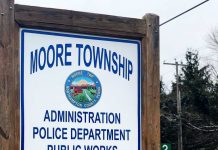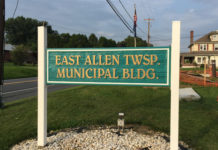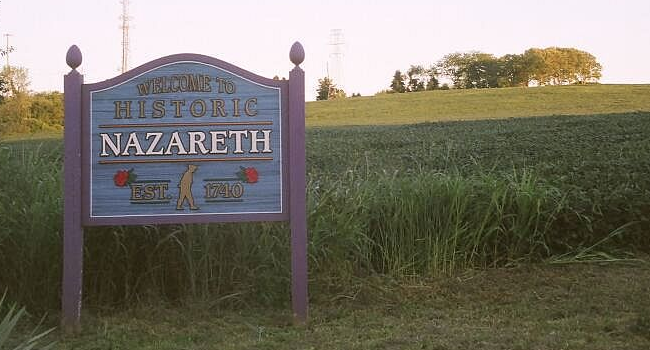During the Borough of Bath’s Neighborhood Watch Group meeting on Wednesday, May 8, representatives from Northampton County Emergency Management Services spoke to residents and helped them discover the inner workings of emergency management and preparation.
Thomas Guth, Northampton County hazard mitigation/disaster recovery manager, walked residents through how the county prepares for emergencies, while Chad Marsh, 911 center operations and training manager, gave residents a look at the daily operations of 911 dispatchers.
Emergency Management Services assists over 304,000 residents in Northampton County, 38 municipalities, four local colleges, 30 police stations, and 40 fire and rescue stations. The organization also assists local school districts.
From the Emergency Operations Center, mobile response unit, and on-the-ground staff, the organization responds to dangers and emergencies like fires, floods, chemical spills, and more. Representatives are also present at mass gatherings, like Musikfest.
There are four levels of emergencies that the Emergency Operations Center is prepared for, with over 30 staff members at “full activation.” Guth said Hurricane Sandy was the only time in recent years when the highest level of emergency was instated.
However, the dangers traveling through Northampton County on a daily basis may surprise residents. Radiological and nuclear chemicals, for example, are found in the county daily, passing through on local highways to area hospitals. Should one of those vehicles crash, Emergency Management Services is ready to respond.
The 911 center is another important part of Emergency Management Services. In 2018, over 90,000 emergency 911 calls were made in Northampton County.
“It takes a unique type of person…to take [these] calls,” said Marsh.
Marsh walked residents through the 911-call process. Dispatchers will first ask where the emergency is (not “what” the emergency is, as is so common on television).
“It is okay to say you do not know,” Marsh added.
Dispatchers will then ask for the caller’s municipality, phone number, and name before asking what their emergency is. All of this information is required within 60 seconds. Marsh added that residents can also text 911 in the case of an emergency.
There are usually 13 dispatchers serving on a single shift. All dispatchers must go through several hundred hours of classroom and on-the-job training.
“You have no idea how you can go from 0 to 60,” Marsh said.
He acknowledged that the job is stressful, but dispatchers learn to “brush [the negativity] off their shoulders.” Counselors are also available.
Together, Marsh and Guth represented a group of first responders not normally recognized by the public, but a group that plays an integral role in emergency response and public safety.
They encouraged residents to take a tour of the 911 center and enroll in CodeRED, the county’s free notification service that provides emergency alerts via phone call, text message, email, or social media. To enroll, residents should visit www.ncem-pa.org.








